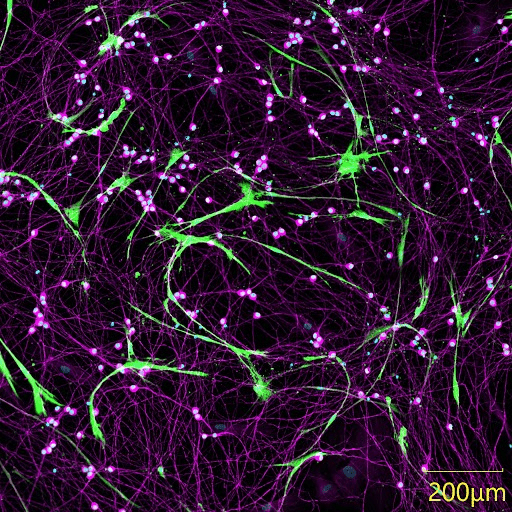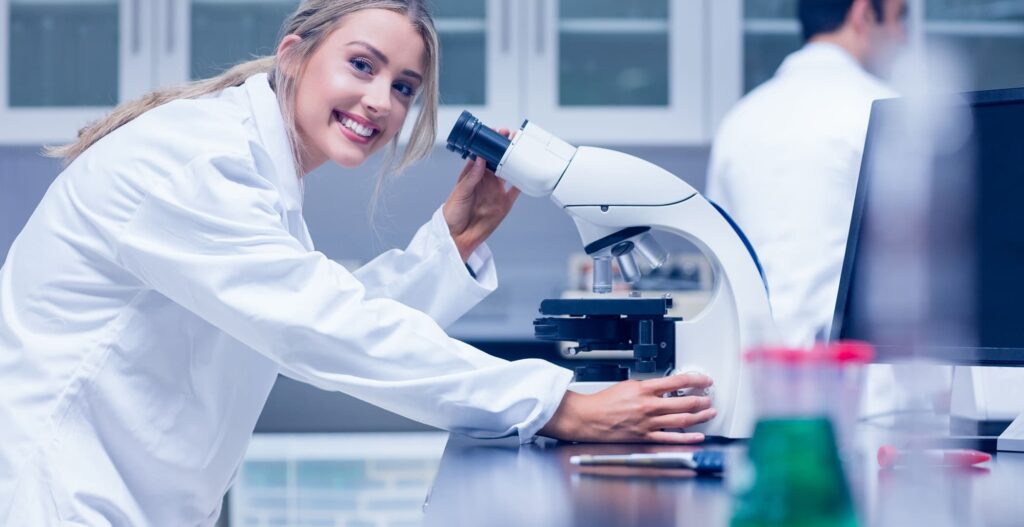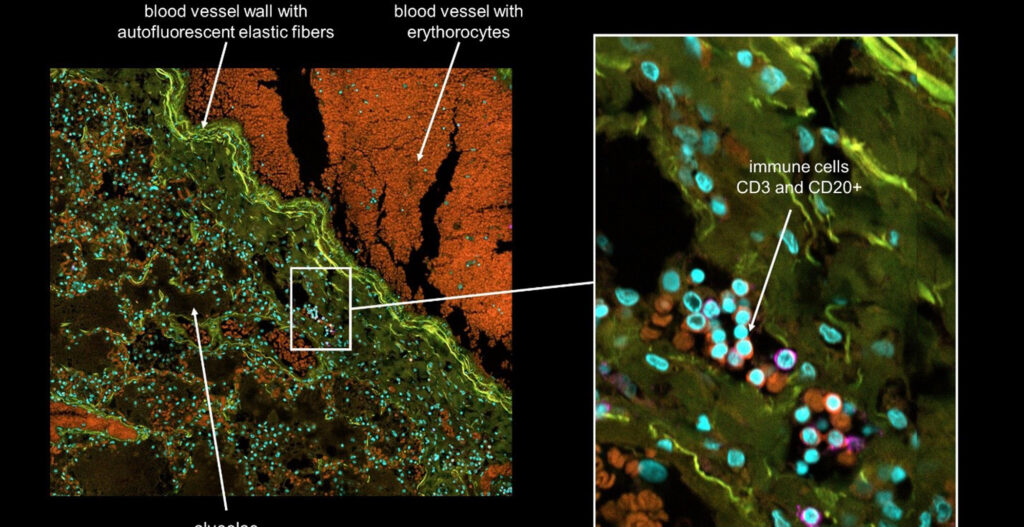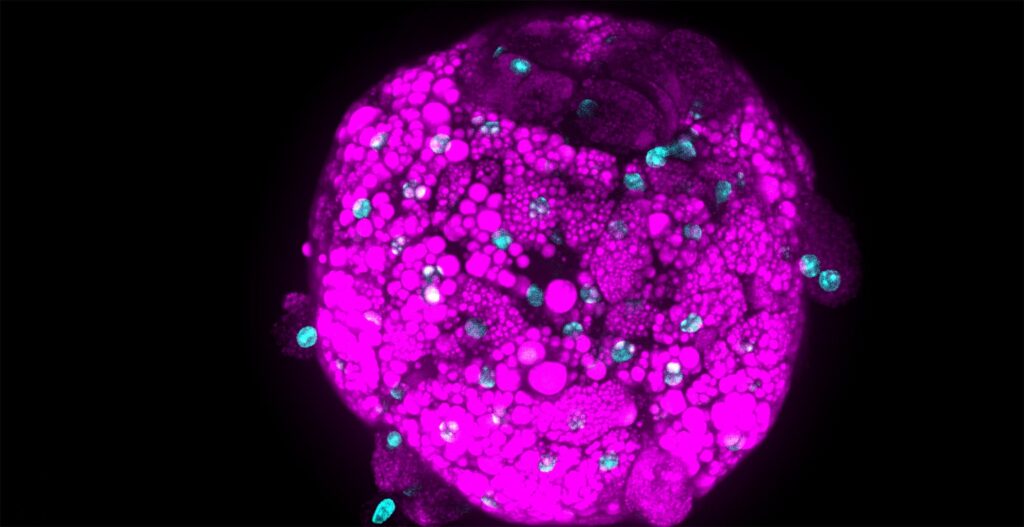Introduction to AxoSim
AxoSim empowers advancements in human neuroscience and is mission-driven to develop biomimetic human models with the potential to jumpstart the discovery and development of breakthrough therapies for neurological diseases. It partners with biopharma companies to facilitate therapeutic innovation by empowering drug developers to obtain relevant human data early in the R&D process, reducing the time and cost of drug discovery and increasing the
probabilities of success. The company’s proprietary drug discovery platforms NerveSim®, BrainSim®, and 2D neurotoxicity drug discovery platforms deliver clinically-relevant functional data, enabling the selection of better lead candidates with phenotypically accurate assays. AxoSim’s platforms currently have applications in peripheral neuropathy and neuropathic pain, multiple sclerosis, seizure disorders, neurotoxicology, and other diseases.
Human iPSC-derived sensory neuron and primary human Schwann cell co-culture
AxoSim has developed a novel 2D co-culture platform of human iPSC-derived sensory neurons and human primary Schwann cells. This platform is currently being used in a variety of studies, including those modeling neurotoxicity. This culture setup is ideal for monitoring cell growth, performing drug dosing, and imaging and analyzing the results, as well as multiple quality checks along the way. Once the cells pass the requisite quality checks, they are dosed with proper neurotoxic agent controls as well as multiple doses of client-provided test articles. Currently, this is performed in a 96-well or 384-well format, depending on the needs of the study. These studies run for approximately a week, after which the cells are fixed, and ICC is performed to analyze the results through imaging. At this point, the cultures are imaged on the Yokogawa CQ1, and then those images are further analyzed by Cell Pathfinder. An example of a healthy culture is shown in Fig 1. Schwann cells (hSC, green) are clearly identified in the co-culture with sensory
neurons (hSN, magenta). From these images, cells are counted based on each marker and their nuclei (DAPI, cyan). Further metrics can be analyzed to gain even more information from the culture, such as neuronal axon density, Schwann cell area, and Schwann cell length.
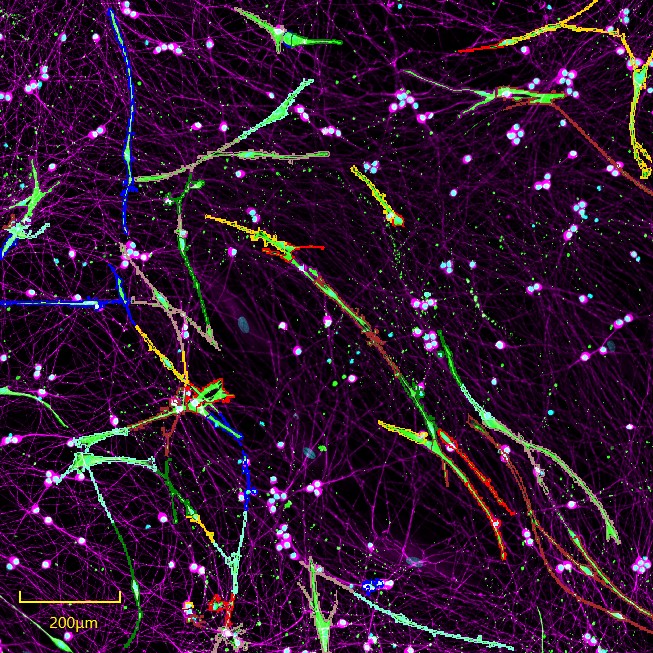
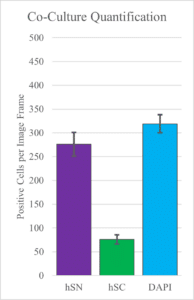
Why do you use the CellVoyager CQ1 in your research?
The Yokogawa CQ1 is the major imaging device currently used at AxoSim. From the moment AxoSim started testing its capabilities, the team was impressed with the quality and ease of use.
The machine is used to image 2D cultures as well as 3D cultures with AxoSim’s BrainSim® and NerveSim® platforms. The speed with which this machine can handle tasks has made it very easy to image a large number of plates. This automation means there is a low amount of hands-on dedication needed by a scientist.
For more information on AxoSim and its neuroscience drug discovery platforms, please visit
www.axosim.com.
